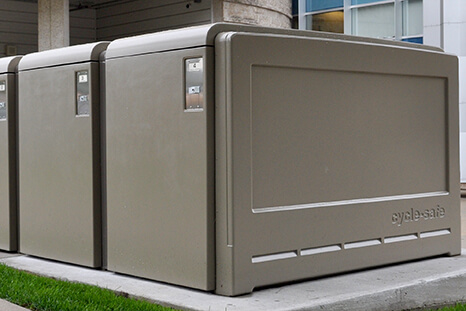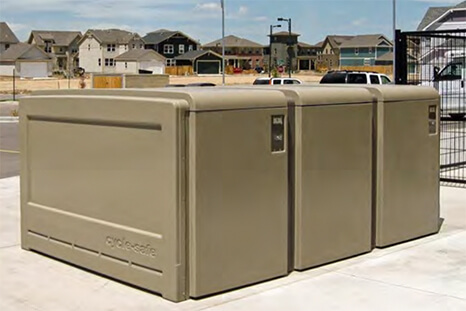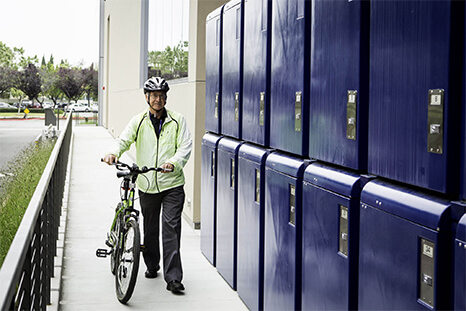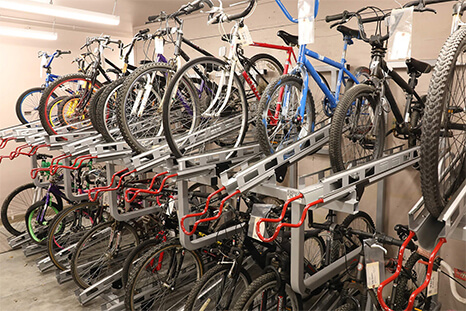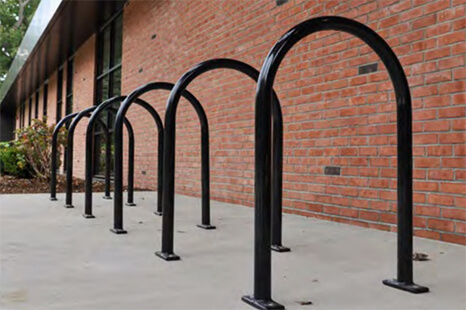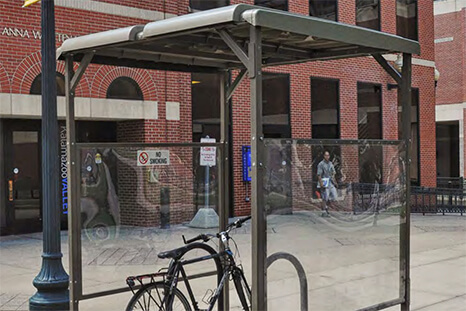Alameda, California, Bicycle Parking Requirements
The City of Alameda, CA has detailed bicycle parking regulations and design standards aimed at promoting and supporting bicycle use throughout the city. These regulations encompass both long-term (Class I) and short-term (Class II) bike parking, design standards, and specific requirements for various types of buildings and facilities. Below is a breakdown of the key requirements and specifications:
Introductory Overview
The City of Alameda places a strong emphasis on promoting bicycling as a sustainable mode of transportation. As part of this effort, the city requires that both long-term and short-term bicycle parking be provided in new developments, redevelopments, and when certain building expansions occur. The bicycle parking standards, which are governed by the Alameda Municipal Code Section 30-7.6 and the Bicycle Facility Design Standards, ensure that the infrastructure is convenient, secure, and accessible to all users, from visitors to employees and residents.
Long-Term (Class I) Bicycle Parking Requirements
- Definition: Long-term bike parking is meant for use by individuals who will park their bicycles for extended periods, such as residents or employees. It is typically provided in enclosed spaces such as bike lockers, cages, or secure bike rooms.
- Security and Weather Protection: These spaces must be secure, enclosed, and weather-protected, often located indoors or within a dedicated bicycle facility.
- Design: Long-term parking can include bike lockers or fully enclosed cages or rooms, with racks that meet the city’s design standards.
- For developments requiring at least 10 long-term spaces, at least 10% must accommodate larger bikes (e.g., cargo bikes, adult tricycles) and no more than 30% of spaces may require users to lift the bicycle more than 2 feet.
Short-Term (Class II) Bicycle Parking Requirements
- Definition: Short-term bike parking is designed for visitors or customers who need to park their bicycles for short durations. These spaces are usually located near building entrances and are designed to be easily accessible.
- Location: These racks must be positioned near public entrances, ensuring high visibility and ease of access.
- Rack Design: Short-term bike racks must support a bike at two points, allow the frame and at least one wheel to be locked with a U-lock, and be securely anchored to the ground. They should be resistant to cutting, rusting, or bending.
Design Standards for Long-Term (Class I) Bicycle Parking
- Rack Design: Racks must meet the city’s standards, providing stable and secure options for locking a bike.
- Accessibility: The location of long-term parking must be easily accessible, often requiring access by ramp or elevator for upper floors.
- Enclosure: Spaces should be enclosed and only accessible to authorized users, either through keycard or lock systems.
Design Standards for Short-Term (Class II) Bicycle Parking
- Rack Design: Short-term racks must support the bicycle at two points, allow for locking both the frame and at least one wheel, and be anchored securely.
- Weather Protection: Short-term parking spaces are often uncovered, but when possible, shelters or coverings are recommended to provide additional protection from the weather.
Required Bicycle Parking Spaces by Facility Type
| Land Use | Long-Term | Short-Term |
|---|---|---|
| Multi-unit Residential without private garage | 0.5 per bedroom (1 per unit minimum) | 0.05 per bedroom; 0.1 per bedroom if above 30 units (2 minimum if less than 4 units; 6 minimum if 4 or greater units) |
| Hotel/motel | 1 per 25 rooms (2 minimum) | 2% of max. daily attendance (2 min.) |
| Residential care facility | 1 per 20 employees or 70,000 square feet (sf) floor area, whichever is greater (2 minimum) | 1 per 25 rooms (2 minimum) |
| Restaurants | 1 per 5,000 sf floor area (2 minimum) | 1 per 1,500 sf floor area (2 minimum) |
| Office | 1 per 10,000 sf floor area (2 minimum) | 1 per 2,500 sf floor area (2 minimum) |
| Public buildings, municipal and education | 1 per 10 employees and 1 per 5 students of planned capacity (2 minimum) | 1 per 3,000 sf floor area or 1 per 20 students of planned capacity, whichever is greater (2 minimum) |
| Libraries, museums, art galleries | 1 per 10 employees (2 minimum) | 1 per 4,000 sf floor area (2 minimum) |
| Retail, banks, minor repair services | 1 per 10,000 sf floor area (2 minimum) | 1 per 2,000 sf floor area (2 minimum) |
| Manufacturing, major | 1 per 8,000 sf floor area (2 minimum) | 2 spaces at each public entrance (2 min.) |
Manual Lifting. For projects requiring at least ten (10) long-term bicycle parking spaces, spaces that require the user to manually lift the bicycle vertically two (2′) feet or more off the ground shall not constitute more than thirty (30%) percent of the total spaces. All other spaces shall not require lifting the bicycle or be equipped with mechanical or other built-in assistance to secure the bicycle.
The above information represents a partial list of the facility types and their bike parking requirements for Alameda, CA. Please refer to the links below for more detailed information.
Bicycle Room Design and Bike Cage Requirements
Bike cages are fully enclosed and covered, storage area in which bicyclists lock their bikes to racks installed in the cage. Cages must:
- Have installed racks that meet all the rack requirements listed in Short-Term Rack Design Requirements.
- Be secured and offer access only to people locking their bikes.
- Be shown on the site plan with rack type, location and all manufacturer clearance requirements.
Bike rooms are fully enclosed storage rooms in which people lock their bikes to racks. A bicycle room can also feature amenities such as bike pumps and basic tools. A bike room must:
- Have racks installed inside the room that meet all the rack requirements listed in Short-Term Design Requirements. Racks may also be wall-mounted.
- Allow easy access by elevator or ramp to the ground level.
- Be secured and only offer access to people locking their bikes.
- Be shown on the site plan with rack type, location and all manufacturer requirements.
Showers and Personal Lockers
| Use | Square Footage | Number of Showers | Number of Lockers |
|---|---|---|---|
| Office, Industrial, Manufacturing | 0 – 4,999 | 0 | 0 |
| 5,000 – 19,999 | 1 | 2 | |
| 20,000 – 49,999 | 2 | 4 | |
| 50,000 and up | 4 | 8 | |
| Retail, eating and drinking, personal service | 0 – 24,999 | 0 | 0 |
| 25,000 – 49,999 | 1 | 2 | |
| 50,000 – 99,999 | 2 | 4 | |
| 100,000 and up | 4 | 8 |
Showers should be provided for men and women. If only 1 shower is provided, it should be designed as a unisex facility that is accessible to people with disabilities.
As an alternative to including shower facilities within a building, a new business may submit a written agreement for employees to utilize existing shower facilities of a business within 300′ of the project’s line. The agreement must be signed by both parties involved, allow use of the facilities in perpetuity, establish allowable hours of use, include provisions for maintenance, and involve shared liability agreements.
Additional Requirements by Neighborhood
Some regions or districts within Alameda may have additional or unique bicycle parking requirements. These can vary depending on the expected usage, local zoning laws, and specific urban development plans.
Official Regulations
Alameda Municipal Code Section 30-7.6 governs off-street bicycle parking requirements
The Alameda code states bicycle parking shall be designed consistent with the City of Alameda Bicycle Facility Design Standards (30-7.6b). The full Bicycle Facility Design Standards can be found on the City of Alameda’s website.
Alameda Transportation and Planning – Bike Parking Requirements
Alameda Code of Ordinances for Bike Parking Requirements
Alameda Bicycle Facility Design Standards
Alameda Transportation and Planning Department Bike Parking Requirements

